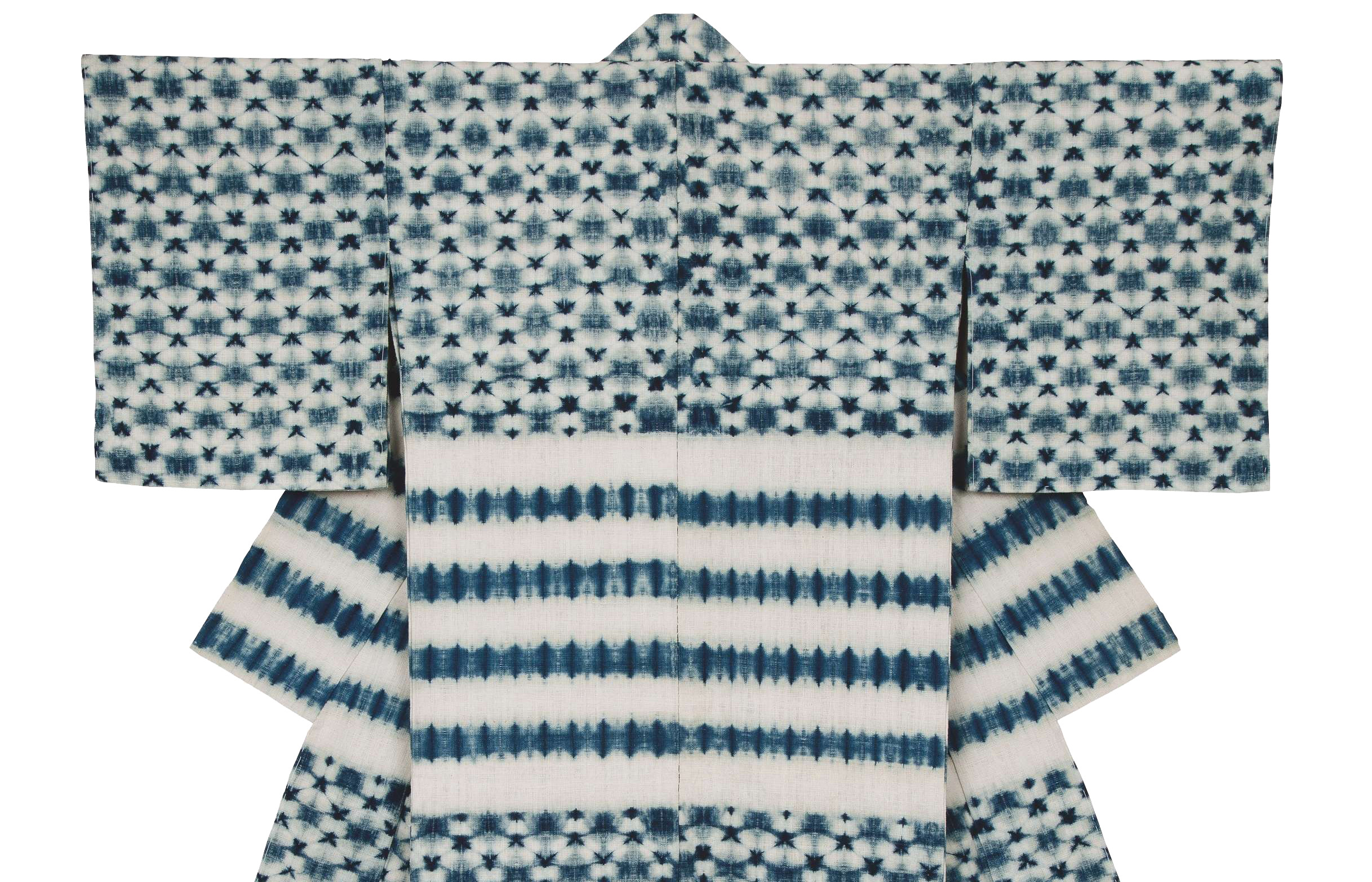In 1956, at the age of 57, Motohiko Katano (1899-1975), under the advice of the founder of the mingei (folk arts) movement Soetsu Yanagi, decided to abandon all other artistic expressions to focus exclusively on shibori resist dyeing textiles.
For an artist who had once hoped to become a yōga (Western-style) painter and had even trained with the renowned Ryusei Kishida, it seems like an unusually specific move at a late stage in his career. Yet within less than 20 years, Katano became known as an unparalleled pioneer of Japanese tie and stitch resist dyeing, and the creator of a technique that artisans now refer to as "Katano shibori."
The Japan Folk Crafts Museum's "Indigo Shibori: The Works of Motohiko Katano" is a captivating showcase of Katano's kimono, noren curtains, wall hangings, textile samples and bolts of patterned fabrics. At every turn, striking indigo blues against crisp whites catch the eye, while tessellated patterns and unusual motifs that seem to defy the capricious nature of resist dyeing entice visitors to pause for closer inspection.


















With your current subscription plan you can comment on stories. However, before writing your first comment, please create a display name in the Profile section of your subscriber account page.